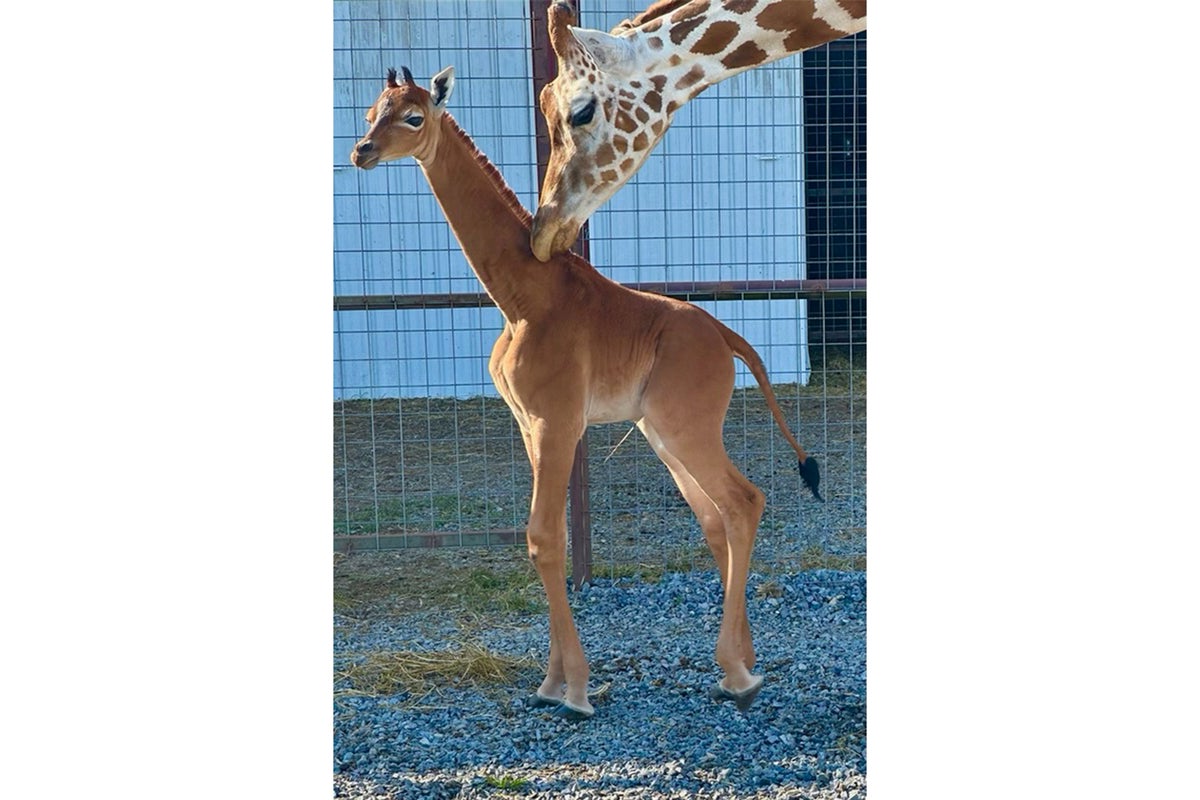
One zoo says it has welcomed a rare spotless giraffe.
On 31 July, at Brights Zoo in Limestone, Tennessee, a giraffe without spots was born, and the zoo said, according to experts, they believe she is the only solid-coloured reticulated giraffe on the planet.
“Giraffe experts believe she is the only solid-coloured reticulated giraffe living anywhere on the planet,” Bright’s Zoo stated in a release.
Reticulated giraffes are a species of giraffes with brown and orange spots. They are native to Africa and in 2018 were listed as endangered, according to the Giraffe Conservation Foundation.
David Bright, the zoo’s director, has said in an email to CBS News that the last record of a spotless giraffe dates back to 1972 in Tokyo. It was born at the Ueno Zoo and was named Toshiko.
The goal in giving the giraffe media attention is to bring awareness to giraffe conservation and how the species is on the verge of endangerment. “The international coverage of our patternless baby giraffe has created a much-needed spotlight on giraffe conservation," said Tony Bright, founder of Brights Zoo, in the press release. "Wild populations are silently slipping into extinction, with 40 per cent of the wild giraffe population lost in just the last three decades."
Currently the baby giraffe stands at six feet tall and “thriving” under its mother’s care, according to zoo officials.
The zoo is also holding a naming contest for the public to participate in. On 21 August Brights Zoo announced they were down to four choices left. Kipekee, which means unique; Firyali, which means unusual or extraordinary; Shakiri, which means "she is most beautiful", and Jamella, which means "one of great beauty."
Name suggestions can be left on the zoo’s Facebook page.
The news comes after the loss of two rare all-white giraffes in 2020 at the Ishaqbini Hirola Community Conservancy in Ijara, Garissa County. The all-white giraffes had leucism, which causes the loss of pigmentation, creating white skin. They were travelling in a group of three and were all a family. The two killed were a calf and a female, leaving the male left.
After two of them were killed by poachers, a conservation group fitted the third giraffe with a GPS monitor to trace its movements in case another poacher in the arid savannah near the Somalia border were to come after it.
Now the GPS tracking device, attached to one of the giraffe’s horns, will ping every hour to alert wildlife rangers to its location.
"We are thankful for the tremendous help from KWS, Save Giraffes Now and the Northern Rangelands Trust in furthering community efforts to safeguard wildlife species,” said Ahmed Noor, the conservancy’s manager in a press release. “The giraffe’s grazing range has been blessed with good rains in the recent past and the abundant vegetation bodes well for the future of the white male.”
Ishaqbini was first established as a community conservancy by the communities of Hara, Kotile and Korisa locations, with the aim of conserving the ecosystem within Ijara, Garissa County, while sustaining their livelihoods. It is also home to a variety of other species – warthog, lesser kudu, gerenuk, ostrich, a unique herd of largely maneless plains zebra, and the endangered reticulated giraffe – which are facing decline across Africa, according to the release.







